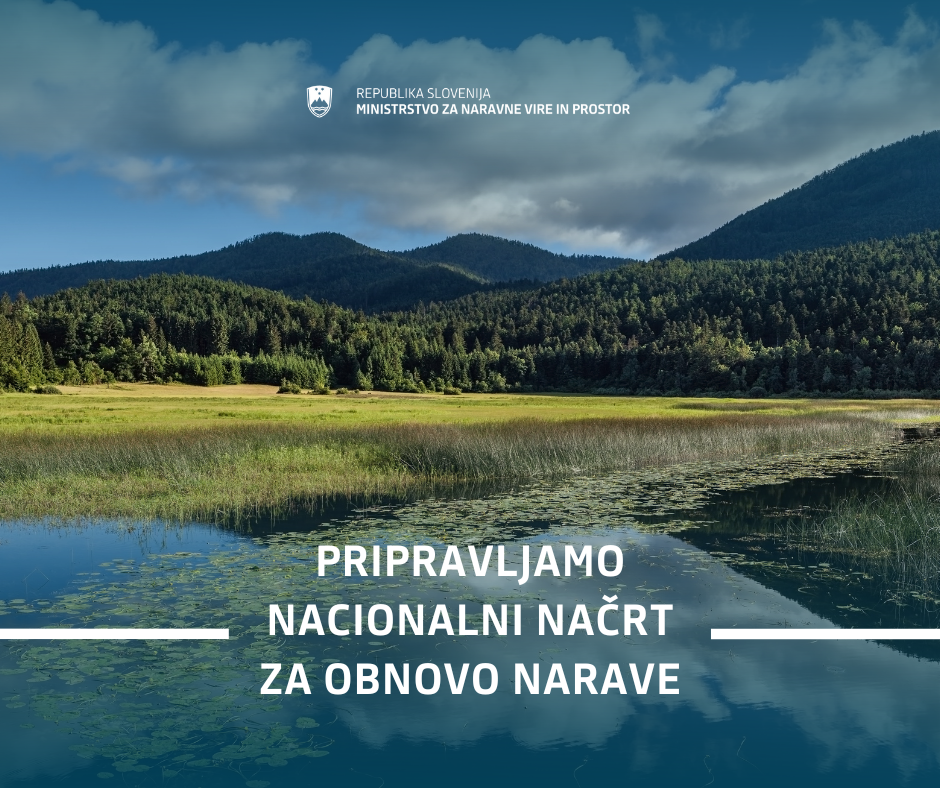Ministry of Natural Resources and Spatial Planning is preparing National Nature Restoration Plan
At European level, a draft Commission Implementing Regulation on a common format for national recovery plans has already recently been approved.
The Ministry of Natural Resources and Spatial Planning is aware that the successful preparation and implementation of such a plan can only be achieved through the cooperation of relevant experts, in particular in the fields of agriculture, forestry, water, spatial planning and fisheries. In addition, in line with the Aarhus Convention, we will ensure a transparent process for the adoption of the National Nature Restoration Plan and involve other interested stakeholders in the preparation through events.
The EU Nature Restoration Regulation requires Member States to take action to restore at least 30% of terrestrial, coastal, freshwater and marine habitats that are currently not in good condition by 2030, at least 60% by 2040 and at least 90% by 2050. We also need to take action to restore natural river connectivity, halt the decline of pollinator populations and restore agricultural, forest and urban green spaces.
By 2030, measures to restore habitat types should be implemented on approximately 14,000 to 15,850 hectares, or about 0.8% of the territory of the Republic of Slovenia. Habitat types in need of restoration measures are:
- riparian forests (2,520 to 3,750 hectares),
- mountain coniferous forests (540 hectares),
- bog woodland (60 to 120 hectares),
- grasslands and other grazing habitats (9,021 to 9,351 hectares),
- riparian meadows (1,140 hectares),
- rivers and lakes (1,220 hectares)
- and up to a maximum of 850 hectares of other habitat types.
Slovenia will identify concrete actions in the preparation of the National Nature Restoration Plan and identify priority areas for restoration by 2030, building on already adopted strategic national acts such as the National Environmental Protection Programme 2030 and the Natura 2000 Management Programme for the period 2023-2028 (PUN 2023-28).
Inter-ministerial and civil society cooperation is of key importance
An inter-ministerial consultative working group has been set up to ensure coherence and expert support in the development of the plan.
It involves all relevant ministries and institutions, including the Ministry of Natural Resources and Spatial Planning, the Ministry of Agriculture, Forestry and Food, the Nature Conservation Institute of the Republic of Slovenia, the Water Directorate of the Republic of Slovenia, the Ministry of Environment, Climate and Energy, and the Slovenian Forest Service.
Other stakeholders will also be involved according to a pre-defined timeline, and consultations with the wider general and professional public and NGOs will be organised.
Overarching objectives of the Regulation
Covering at least 20% of terrestrial and marine areas in the EU by 2030 with restoration measures.
- Progressively improve the condition of degraded ecosystems and ensure their long-term sustainability.
Establishing measures to restore at least 30% of the total areas of habitat types designated by the Regulation that are not in good condition by 2030, 60% by 2040 and 90% by 2050
- This includes forests, coastal and inland wetlands, grasslands and pastures, rivers, lakes, riparian and shoreline habitats, heathlands and scrublands, and seashore.
Restoring natural river connectivity and natural functions of related floodplains
- By 2030, at least 25,000 km of unnecessary barriers are to be removed in the EU to improve river connectivity.
Restoring pollinator populations
- Improving pollinator diversity and reversing the decline of pollinator populations by 2030.
Restoring agricultural ecosystems
- Improving the biodiversity of agricultural ecosystems through monitoring selected indicators (grassland butterfly index; soil organic carbon stock; proportion of agricultural land with high landscape diversity characteristics) and improving the farmland bird abundance index.
Restoring urban ecosystems
- No net loss of urban green space and tree cover at national level by 2030, with an upward trend in both to satisfactory levels after 2030.
Restoring forest ecosystems
- Achieve an upward trend at national level until satisfactory levels are reached for 6 of the 7 indicators and for the index of common forest birds.
Ensuring long-term monitoring and funding of measures
- Member States should prepare national nature restoration plans and ensure their implementation.
Benefits of the national nature restoration plan
The National Nature Restoration Plan will contribute to the protection and restoration of habitats and the improvement of ecosystems, improving river connectivity, supporting pollinators and agricultural ecosystems, improving the condition of agricultural and forest ecosystems and increasing green spaces in urban areas.
Actions in these areas will help to restore biodiverse and resilient ecosystems in a long-term and sustainable way, and will help to achieve climate change mitigation, adaptation and land degradation neutrality objectives, while improving food security.
Working together for a healthy and restored nature. Thank you for your support and participation in this important process!


